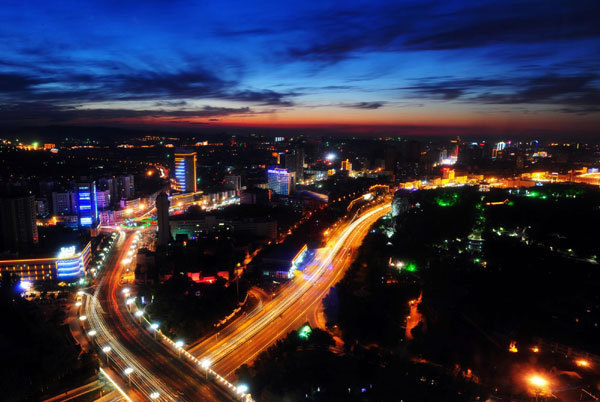China pushes for opening up to Eurasian heartland
Updated: 2011-09-01 21:35
(Xinhua)
|
|||||||||||
 |
|
The aerial view of Urumqi, capital of northwest China's Xinjiang Uygur autonomous region, Aug 30, 2011. [Photo/Xinhua] |
URUMQI - China will speed up the opening up of its western inland region, continue to fund cross-border infrastructure projects, and roll out favorable policies to make Xinjiang a key economic hub at the heartland of Eurasia.
Vice-Premier Li Keqiang told officials and business leaders attending the first China-Eurasia Expo in Urumqi, Xinjiang Uygur autonomous region, on Thursday that opening up to countries in Eurasian heartland was an important part of the country's overall opening-up.
Xinjiang, which covers one-sixth of China's landmass, borders key regional players such as Russia, Kazakhstan, and Pakistan. The region also holds abundant oil and gas reserves. But regional economic activities were slowed partly due to poor infrastructure along the border, which runs across rough territories such as the Pamirs plateau.
The region has also been engaged in a long battle against violence that's been detrimental to economic development. Zhu Hailun, Urumqi's top official, told reporters Wednesday that it took almost a year for the city's economy to recover from the deadly 2009 riots.
Security was tight Thursday in and around the expo venue - the 1.3 -billion-yuan ($201.5 million)- Xinjiang International Convention Center located in suburban Urumqi. Authorities ramped up security after police foiled attempts to sabotage the event, Zhu said.
China opened up to the world from its eastern coast in the late 1970s when late leader Deng Xiaoping unleashed the landmark market economic reform. Decades of a booming export-oriented economy has brought tremendous prosperity to the eastern regions.
"Looking to the future, we will accelerate the opening up of the inland and border regions while advancing the opening up of the eastern region," Li said.
The vice premier said Xinjiang is a key region in the government's strategy to develop the country's western regions and the central government has drawn up and is implementing a series of favorable policies covering tax, investment in infrastructure and environmental protection, exploitation of resources and welfare projects to boost Xinjiang's development.
He said the government is working to speed up the opening-up of Xinjiang by setting up special economic zones in two border cities, restructuring local industries, expanding the number of border trade ports, and implementing financial measures to encourage the use of Chinese currency, the yuan, in cross-border trade and investment.
Li also urged neighboring countries to fast track cross-border infrastructure projects - roads, railways, flight routes, pipelines, and telecommunication networks to explore the full potential of transport across the heartland of Eurasia.
Beijing will continue to provide low-interest loans to other countries for infrastructure projects, he added. Xinjiang now has only one cross-border railway, the 460-km line that connects Urumqi to Kazakhstan' s rail through the Alataw pass. A second China-Kazakhstan rail line is being constructed to link Xinjiang's trading port Horgos to the inland rail network.
Pakistani officials have also proposed constructing a cross-border railway to link its northern border with Kashgar, an old Silk Road town and a major city today in southern Xinjiang. Pakistan's ambassador to China Masood Khan said that a feasibility study of the railway had been conducted, but there is still no time-table for construction.
"By using this option, you can shorten China's trading routes from the Gulf to Shanghai by about 5,000 miles. It is very short," Khan said, adding that talks about a cross border pipeline that can carry oil and gas to China through inland Eurasia have also begun.
"New opportunities have emerged for China and countries in the heart of Eurasia. The pace of regional economic integration is growing significantly," Li said.
China's trade with central, south, and west Asian countries reached $270 billion last year. "There is great potential to boost regional trade. Governments should further expand their domestic markets and oppose protectionism to facilitate trade," he said. EXPO
- No taxation on adding spouse's name on property
- China-Eurasia Expo opens in Urumqi
- China delays Tiangong-1 launch
- Iceland land deal 'purely commercial'
- Sino-Philippine trade to double
- Authority verifying Conoco oil leak claim
- China-Eurasia Expo opens in Urumqi
- Conoco's oil leak claim not verified by China
Hot Topics
Libya conflict, Gaddafi, Oil spill, Palace Museum scandal, Inflation, Japan's new PM, Trapped miners, Mooncake tax, Weekly photos, Hurricane Irene
Editor's Picks

|

|

|

|

|

|







